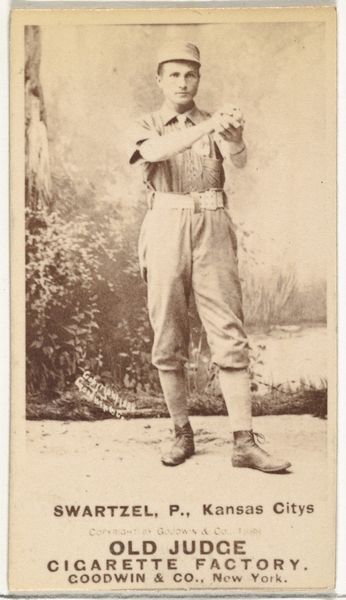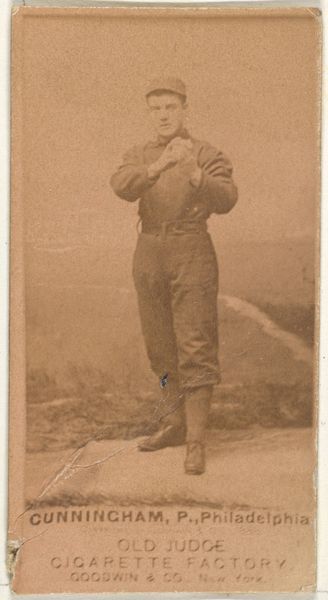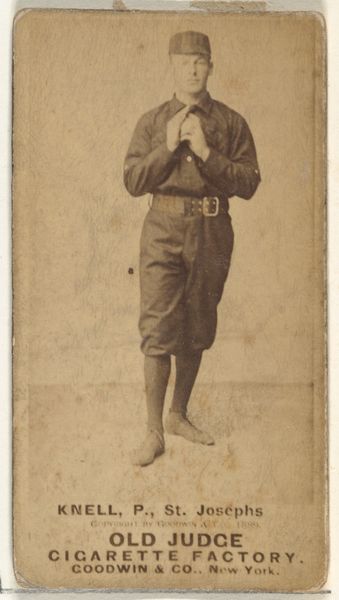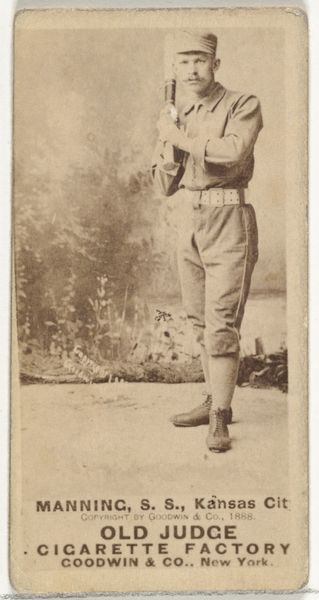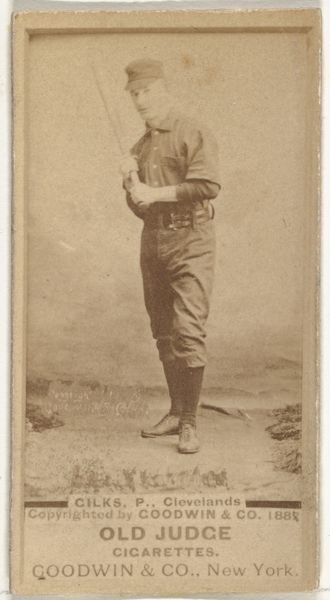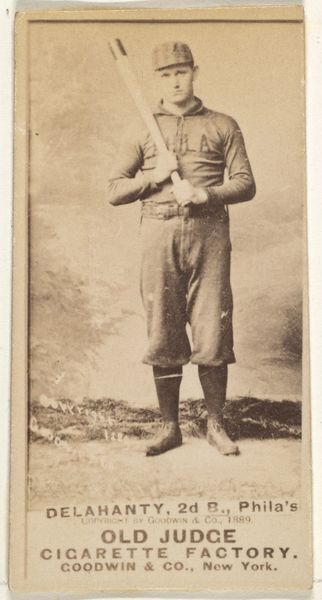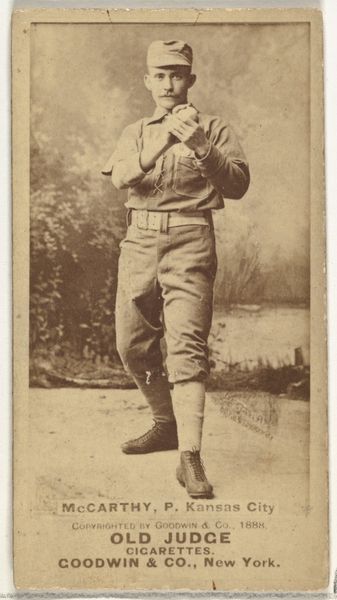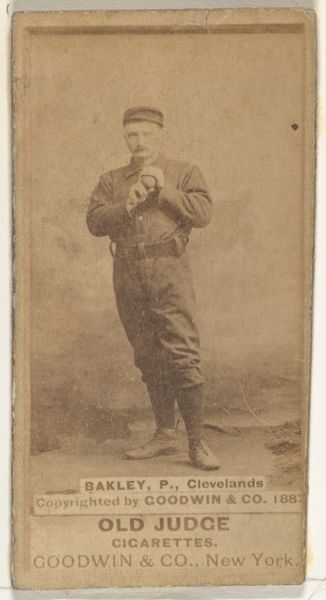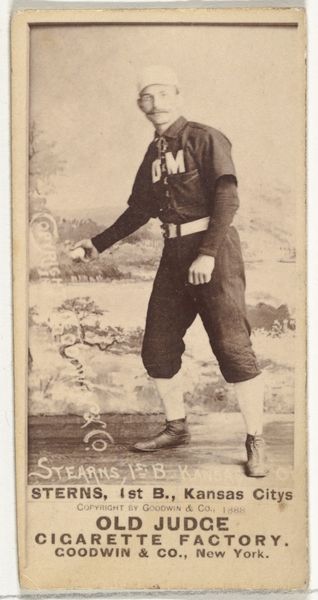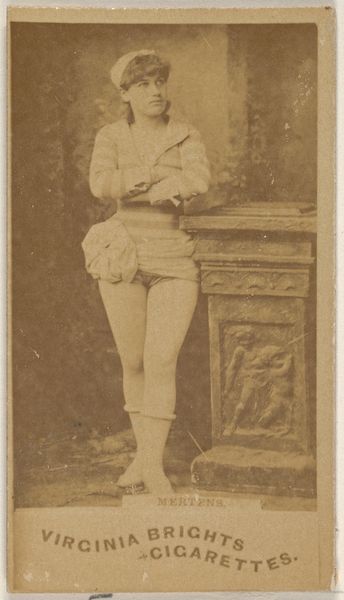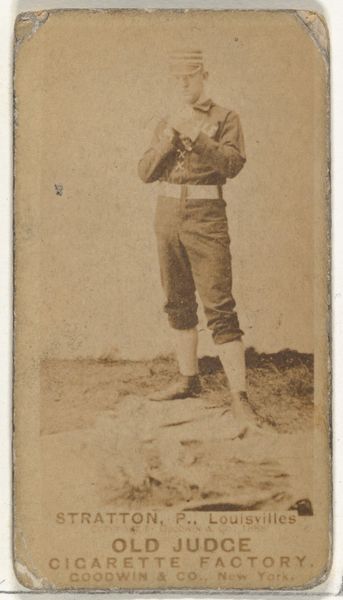
James P. "Jim" Conway, Pitcher, Kansas City Cowboys, from the Old Judge series (N172) for Old Judge Cigarettes 1888
0:00
0:00
print, photography, albumen-print
#
portrait
# print
#
baseball
#
photography
#
men
#
albumen-print
Dimensions: sheet: 2 11/16 x 1 3/8 in. (6.9 x 3.5 cm)
Copyright: Public Domain
Editor: Here we have an albumen print from 1888, "James P. 'Jim' Conway, Pitcher, Kansas City Cowboys," produced by Goodwin & Company as part of the "Old Judge" series for cigarette packaging. It's a straightforward portrait, but the sepia tones give it this wonderfully nostalgic, almost ghostly feel. What strikes you when you look at it? Curator: I see more than just nostalgia. I see the commodification of labor and leisure intertwined. Consider the context: industrialization was booming, as were anxieties around masculinity and physical prowess. This baseball card, functioning as an advertisement, participates in constructing and selling a particular ideal of American manhood—strong, capable, and inextricably linked to consumption. What’s compelling is how this seemingly simple portrait normalizes that association. Editor: So, you’re saying the act of advertising shapes the cultural understanding of sports and even masculinity itself? Curator: Precisely. The "Old Judge" series placed these athletes—working-class men—within the realm of commerce, making them symbols, not just players. Their images helped build brand loyalty while simultaneously cementing baseball's place in the national identity. But we also must question who was excluded from these representations. Consider the absence of players of color in these early depictions. How did that absence contribute to a racialized vision of American sports? Editor: That’s a powerful point. The lack of diversity reinforces existing power structures. This makes me see the image as not just a portrait, but as a complex cultural artifact reflecting both admiration for athletes and the economic forces at play in shaping identity. Curator: Exactly! By acknowledging these broader social and historical undercurrents, we move beyond a purely aesthetic appreciation to engage with the work's deeper cultural impact. It challenges us to think critically about the images and stories we consume. Editor: This has been really insightful. I’ll definitely view historical portraiture differently now. Thanks.
Comments
No comments
Be the first to comment and join the conversation on the ultimate creative platform.
